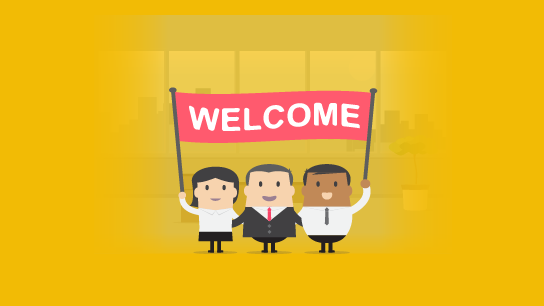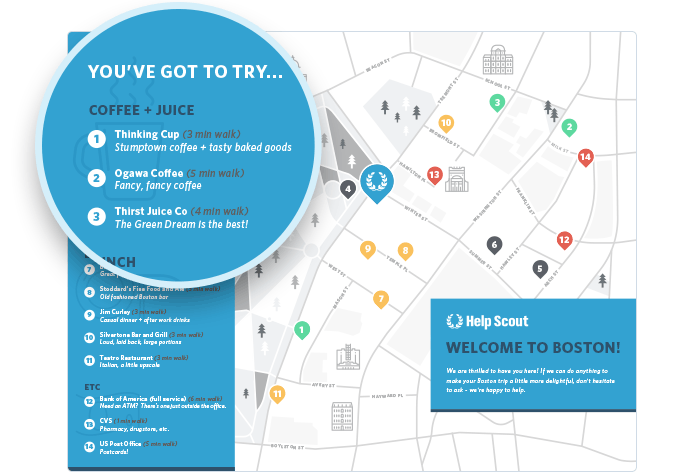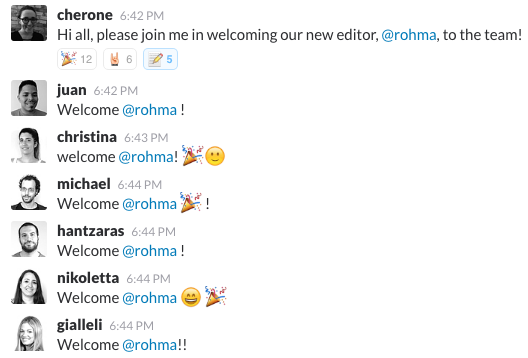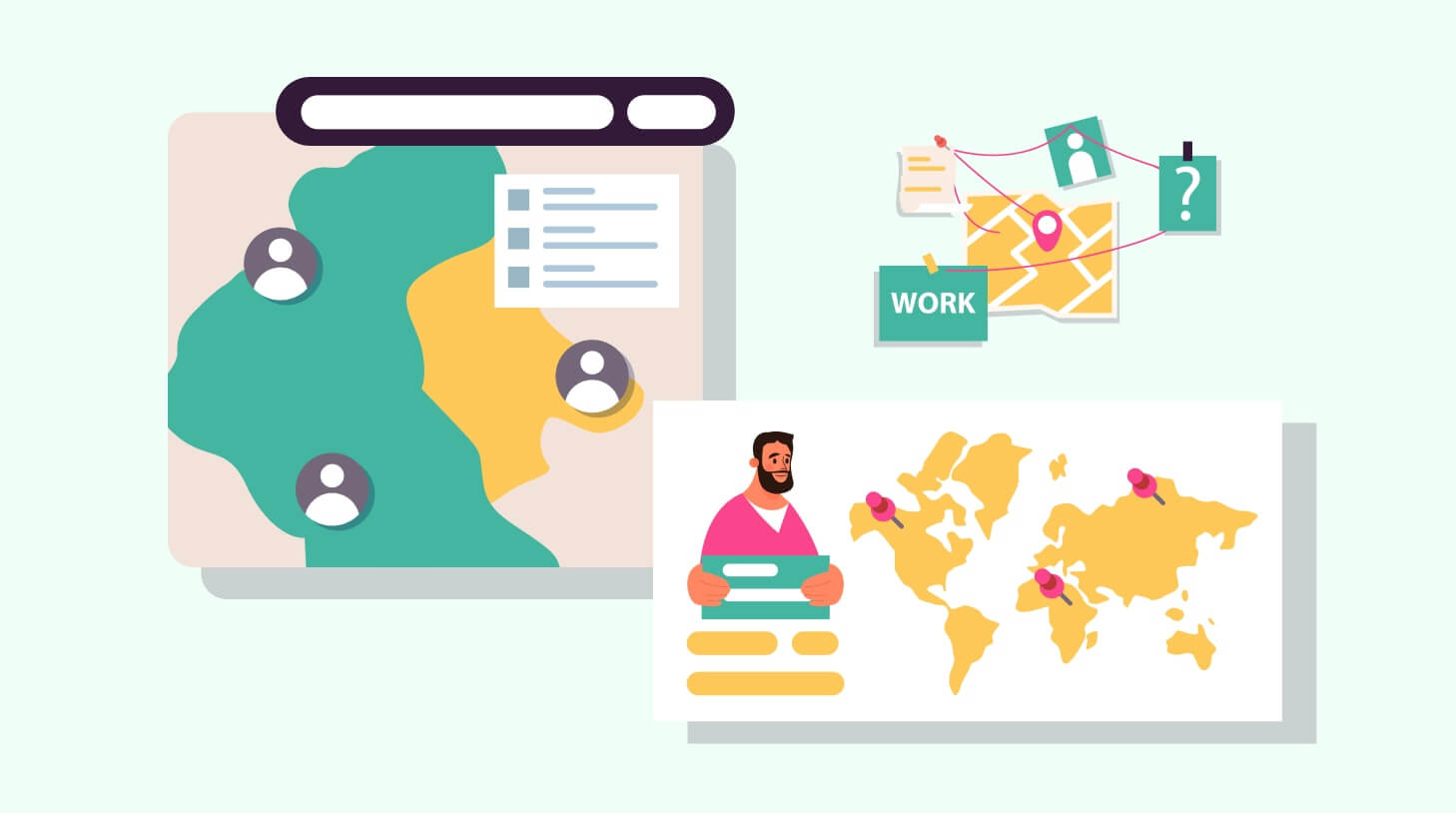How to welcome a new hire

The first day at a new job normally involves trainings, meetings and paperwork. But if you only stick to formal tasks and documents, you’re missing your chance to really welcome a new employee to the team.
Here are some simple ways to welcome a new employee with warmth:
Contents
Communicate early and often
Start welcoming your new employee before they arrive. The more your new hire knows about your company and your plans for their first few weeks at work, the less nervous they’ll be for their first day. Check in with them before they start and let them know how to prepare and what to expect. Here’s what each employee should know about before their start date:
- Your company dress code
- Their team’s normal working hours
- A tentative schedule for the first week of work
- And what time they should arrive on their first day
To make them feel even more prepared, it’s a good idea to share:
- A list of your tech tools (like Slack, Asana, Google Docs or Trello)
- An overview of your company policies, benefits information and onboarding checklist
Prepare a welcome kit
An employee welcome package or ‘fact sheet’ is a simple gesture that can go a long way. It can include all the normal HR paperwork, company policies, employee handbook and stationery, but it’s a good idea to customize it to fit your new employee’s role. At Workable, we welcomed our new editor with a copy of Josh Bernoff’s ‘Writing Without Bullshit’ book to introduce her to our team’s editing philosophy:
What a warm welcome from @Workable on my #firstday! So happy to be a part of the team! #contentwriting #onboardingswag #hiringdoneright pic.twitter.com/4eBOmNKZCz
— Rohma Abbas (@Rohma_Abbas) December 13, 2016
Both local and remote workers can also benefit from a curated neighborhood guide as part of your welcome kit. Helpscout welcomes their employees to their Boston headquarters with a map of their employees’ favorite places to eat, drink and run errands:

Send a new hire announcement
Not everyone is confident enough to start introducing themselves and socializing from day one. It’s a good idea for the new hire’s manager to send an introductory note to the team on an employee’s first day. Even a simple Slack message in your company’s #general channel, or a short department email can make someone feel welcome:

For big and fast-growing teams, there are two main issues that complicate new hire welcomes. New employees have trouble remembering lots of names and faces. And current employees mightn’t be able to keep track of all their new colleagues. To combat these issues, you could try:
- Sending a new employee announcement email to introduce your new hire and include information that’ll make good talking points.
- Organizing a group activity that involves talking to people from different groups, so that your new hire gets to know people early on.
- Planning an out-of-the-office casual meeting (e.g. for lunch) where team members can get to know each other better.
Related template: Welcome new staff email
Assign a work friend
Managers usually oversee their new team members’ onboarding processes. But pairing a new employee with a colleague can help to make them more comfortable. Colleagues are the best people to share obscure office details and customs, like which copy machine needs a reboot before it works, which local coffee shop serves the best espresso and the unwritten rules of meeting room booking etiquette. That’s why assigning each new hire a ‘buddy’ or ‘mentor’ can be a good idea. IBM and Qualcomm acknowledge that onboarding isn’t a one-day affair, so they provide new hires with mentors for a longer period of time (30 days and one year, respectively.)
Have a clear work plan
After the first introductions and a tour of the office, it’s time to get down to work. Schedule product demos or other presentations that will help them understand your way of working. It’s best not to overwhelm your new hire from their first day, but don’t leave them wondering what they should do next. Prepare their first week by giving them simple tasks to complete and an industry reading list, or a set of presentations to fill any downtime they may have between tasks. This way, they’ll familiarize themselves with their job duties and their new company’s competitive landscape while getting a sense of what you expect of them.
Onboarding should be an ever-changing process. As your team gets bigger, your needs will change. So, frequently review your onboarding process. Ask your newest employees about their first days at work. What did they like? What would have been more helpful? Use this feedback to improve your onboarding for new hires in the future.
Frequently asked questions
- How do you welcome a new team member?
- Here is a welcome template that you can use for a new member. “We are so excited that you've decided to join our company! We hope this will be a great opportunity for both of us, and I look forward to working with your team. On behalf of all management, it's wonderful news - Welcome aboard!”
- How do companies announce new employees?
- Employee announcements are a great way to spread excitement about your business. You can introduce new employees at company-wide meetings, have team gatherings like coffee mornings or lunch where they'll be introduced, and list them on various pages that might interest your employees.
- Which of these is the best introduction sentence for an announcement email?
- We're all excited to have [name] on board! He or she will be a great asset in their new role as head of XYZ. We appreciate everything that person did while they were with us, from pulling X project off Y deadline through Z success--thank you so much for being such an essential part of this team's successes over these past few years.




